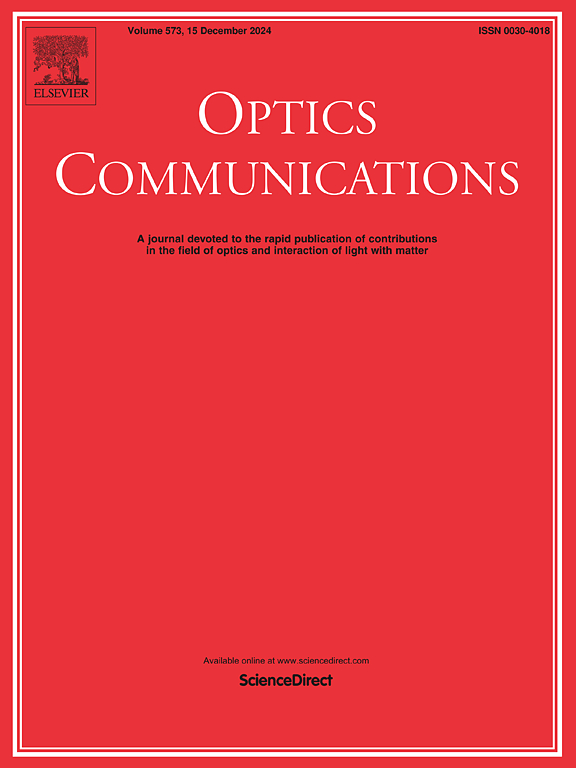在反常和正常色散状态下,稳定的2 μm全保偏光纤锁模激光器
IF 2.5
3区 物理与天体物理
Q2 OPTICS
引用次数: 0
摘要
本文利用非线性放大环镜(NALM)在2 μm光谱区域设计了一种柔性锁模全保偏光纤振荡器。通过调整色散补偿光纤的长度,分别在净异常色散和正常色散下获得了稳定的锁模脉冲串。具有净异常色散的振荡器在中心波长为~ 1951.14 nm处提供飞秒级脉冲,重复率为~ 13 MHz。而在净正常色散状态下,获得了皮秒级结合态锁模脉冲,中心为~ 1949.5 nm,重复率为~ 9.71 MHz。两种锁模操作都具有高稳定性,功率波动小于~ 1%。据我们所知,我们的工作首次在基于nalm的全pm光纤振荡器中同时揭示了两种稳定的锁模操作,这有助于产生稳定的2 μm超短脉冲激光。本文章由计算机程序翻译,如有差异,请以英文原文为准。
Stable all polarization-maintaining fiber mode-locked laser at 2 μm in both anomalous and normal dispersion regimes
We experimentally present a flexible mode-locked all-polarization-maintaining (PM) fiber oscillator at the 2 μm spectral region, relying on the nonlinear amplifying loop mirror (NALM). Stable mode-locked pulse trains under net anomalous and normal dispersions were obtained, respectively, by tailoring the length of dispersion compensating fiber. The oscillator with net anomalous dispersion delivers the femtosecond-level pulse with a repetition rate of ∼13 MHz at a central wavelength of ∼1951.14 nm. While in a net normal dispersion regime, picosecond-level bound-state mode-locked pulses centered at ∼1949.5 nm with a repetition rate of ∼9.71 MHz were obtained. Both mode-locked operations exhibit high stability with power fluctuations of less than ∼1 %. Our work simultaneously reveals the two kinds of stable mode-locked operations in a NALM-based all-PM fiber oscillator for the first time, to the best of our knowledge, which contributes to the generation of stable ultra-short pulse laser in 2 μm.
求助全文
通过发布文献求助,成功后即可免费获取论文全文。
去求助
来源期刊

Optics Communications
物理-光学
CiteScore
5.10
自引率
8.30%
发文量
681
审稿时长
38 days
期刊介绍:
Optics Communications invites original and timely contributions containing new results in various fields of optics and photonics. The journal considers theoretical and experimental research in areas ranging from the fundamental properties of light to technological applications. Topics covered include classical and quantum optics, optical physics and light-matter interactions, lasers, imaging, guided-wave optics and optical information processing. Manuscripts should offer clear evidence of novelty and significance. Papers concentrating on mathematical and computational issues, with limited connection to optics, are not suitable for publication in the Journal. Similarly, small technical advances, or papers concerned only with engineering applications or issues of materials science fall outside the journal scope.
 求助内容:
求助内容: 应助结果提醒方式:
应助结果提醒方式:


